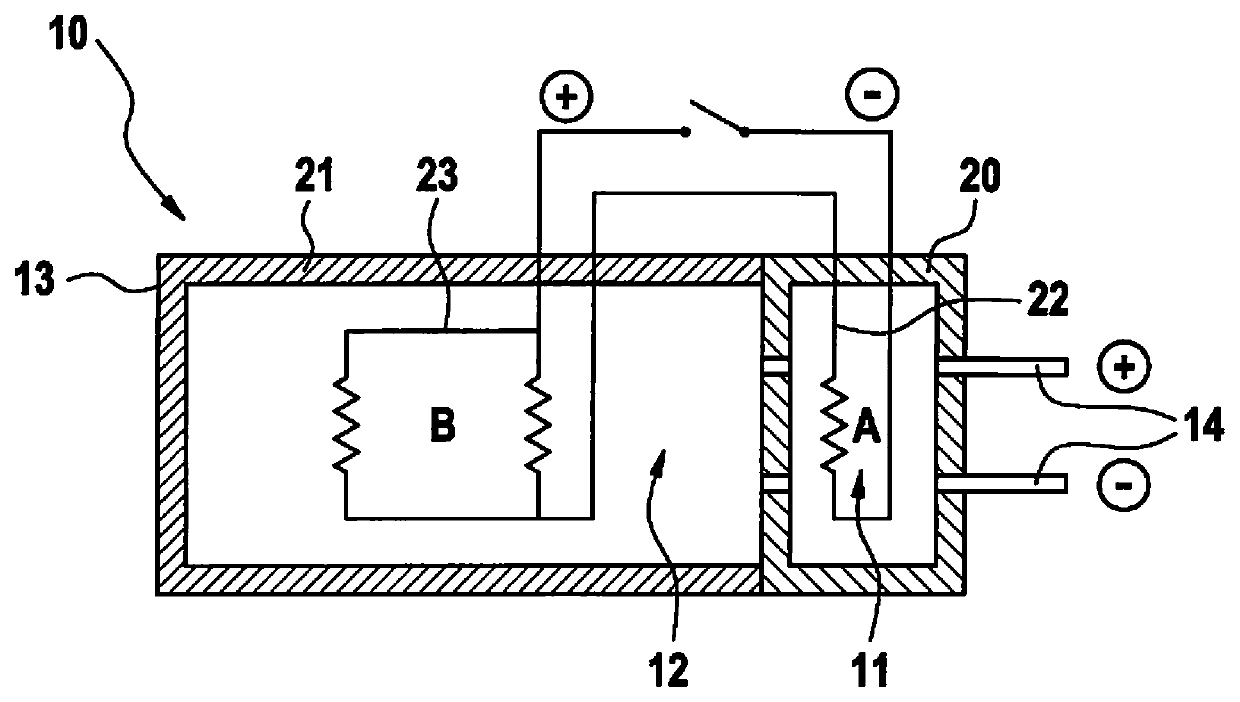Battery including thermal insulation
a battery and thermal insulation technology, applied in the field of batteries, can solve the problems of radiation loss present is potential and undesirable heat leakage, and affecting battery performance and self-discharge, so as to reduce energy loss during battery downtime, increase battery self-sufficiency, and cost-effective
- Summary
- Abstract
- Description
- Claims
- Application Information
AI Technical Summary
Benefits of technology
Problems solved by technology
Method used
Image
Examples
Embodiment Construction
[0022]FIG. 1 schematically shows a battery 10 according to the present invention, which includes a battery housing 13 in which first battery module 11 and second battery module 12 are situated. Battery contacts 14 are situated on the shared battery housing, which are used for connecting the battery to a vehicle and are connected at least to first battery module 11. Battery module 11 includes a first thermal insulation element 20 and a heating element 22. Thermal insulation element 20 surrounds battery module 11 and is designed flush with battery housing 13. Second battery module 12 likewise includes a separate thermal insulation element 21 which likewise surrounds battery module 12. First battery module 11 and second battery module 12 are electrically connected to each other in this case. The two heating elements 22 and 23 of the two battery modules 11 and 12 are likewise connected, so that electrical and / or thermal energy may be transmitted via the connection. A switch is used in t...
PUM
| Property | Measurement | Unit |
|---|---|---|
| operating temperature | aaaaa | aaaaa |
| operating temperature | aaaaa | aaaaa |
| electrically drivable | aaaaa | aaaaa |
Abstract
Description
Claims
Application Information
 Login to View More
Login to View More - R&D
- Intellectual Property
- Life Sciences
- Materials
- Tech Scout
- Unparalleled Data Quality
- Higher Quality Content
- 60% Fewer Hallucinations
Browse by: Latest US Patents, China's latest patents, Technical Efficacy Thesaurus, Application Domain, Technology Topic, Popular Technical Reports.
© 2025 PatSnap. All rights reserved.Legal|Privacy policy|Modern Slavery Act Transparency Statement|Sitemap|About US| Contact US: help@patsnap.com

